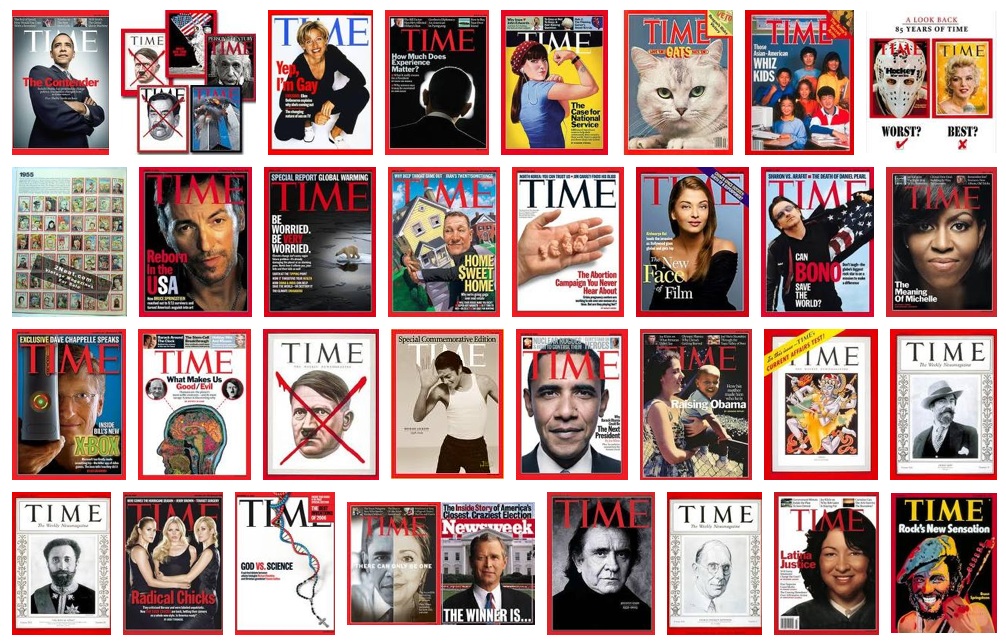Frustration, from time to Time
 Week after week, your GetReligionistas receive mail from people who genuinely distrust or dislike America's mainstream media. There is no way to group all of these people into one simplistic camp. Some of them make a lot of sense and some do not.
Week after week, your GetReligionistas receive mail from people who genuinely distrust or dislike America's mainstream media. There is no way to group all of these people into one simplistic camp. Some of them make a lot of sense and some do not.
Some of them, after all, are simply reacting to the fact that the press struggles to cover religion stories, period, and seems to have special problems doing accurate and balanced coverage of hot-button social issues, from abortion to the ordination of women, from gay rights to free speech in an increasingly complex and divided culture.
Many of these writers believe that most journalists are, to be perfectly blunt about it, "liberals" -- whatever that word means. Now, it is true that studies keep showing that elite journalists, especially in the powerful corridor from Washington, D.C., to Boston, tend to be moral libertarians when it comes to most social issues, taking stands in favor of a kind of radical individualism that is hostile to most traditional forms of religious faith.
Once again, the best writing ever done about one of these issues was the Los Angeles Times series about bias issues in abortion coverage, written by the late David Shaw (who, by the way, was an articulate supporter of abortion rights when describing his own convictions). In part one, Shaw offered this blunt, simple, devastating summary:
Responsible journalists do try to be fair, and many charges of bias in abortion coverage are not valid. But careful examination of stories published and broadcast reveals scores of examples, large and small, that can only be characterized as unfair to the opponents of abortion, either in content, tone, choice of language or prominence of play:
* The news media consistently use language and images that frame the entire abortion debate in terms that implicitly favor abortion-rights advocates.
* Abortion-rights advocates are often quoted more frequently and characterized more favorably than are abortion opponents.
* Events and issues favorable to abortion opponents are sometimes ignored or given minimal attention by the media.
* Many news organizations have given more prominent play to stories on rallies and electoral and legislative victories by abortion-rights advocates than to stories on rallies and electoral and legislative victories by abortion rights opponents.
* Columns of commentary favoring abortion rights outnumber those opposing abortion by a margin of more than 2 to 1 on the op-ed pages of most of the nation's major daily newspapers.
* Newspaper editorial writers and columnists alike, long sensitive to violations of First Amendment rights and other civil liberties in cases involving minority and anti-war protests, have largely ignored these questions when Operation Rescue and other abortion opponents have raised them.
That was published in the mainstream press.
The key, for Shaw, is that this bias is real, but it is not universal. Thus, the goal is to describe these bias issues -- yes -- as fairly and accurately as possible.
You see, it is simply simplistic to say that the mainstream press is always "liberal." It's simplistic to say that the New York Times is always biased, as opposed to offering coverage that is fair and accurate in handling the beliefs involved in debates about religious and cultural disputes in America and around the world. And right now, although it is tempting to say so, it would be simplistic to say that editors at Time have made some kind of conscious decision -- similar to the one made by the fallen editorial team at nonNewsweek -- to ditch the American model of the press and turn their magazine into an advocacy publication for the moral and cultural left.
I know it feels that way, when you read something like the recent feature on the ordination of women to the priesthood by schismatic groups that are fighting the Catholic Church hierarchy. This piece is still being pushed out front at Time.com.
But that's only part of this complex picture.
On the other side, there is "The Price of Free Speech," a solid news feature by Sean Gregory in the current issue about the U.S. Supreme Court and the rights and wrongs of the anti-gay, anti-America protesters from Westboro Baptist Church in Topeka, Kan.
This piece is long, it's complex, it's careful, it's sensitive to viewpoints on both sides. It's serious. In the end, it's agonizing, just like the case it describes. Here's the opening (the only part of the story you can read online, at the moment):
This is Matt's day, Albert Snyder kept telling himself that March morning in 2006, hours before he laid his only son to rest. This is about Matt. Concentrate on Matt. Ignore them.
Them were the seven protesters he had been warned about who were planning to picket his son's funeral. They had never met Lance Corporal Matthew Snyder. They didn't know much about him except that he had been killed in Iraq the week before. And yet they had flown more than 1,000 miles (1,600 km) to brandish signs saying things like "You're going to hell," "God hates fags" and "Thank God for 9/11."
If you have access to a copy of Time, please check this out. The full text will go online in a few weeks, under the magazine's current approach to its new material.
As you read it, please experience the frustration of knowing that this fine piece of American journalism was published in the same magazine that published that complete skewed, unbalanced, advocacy piece on the female priests. Read both pieces. So, which is the real Time? Try to describe this magazine's current approach to journalism.
Good luck. Frustrating, isn't it?